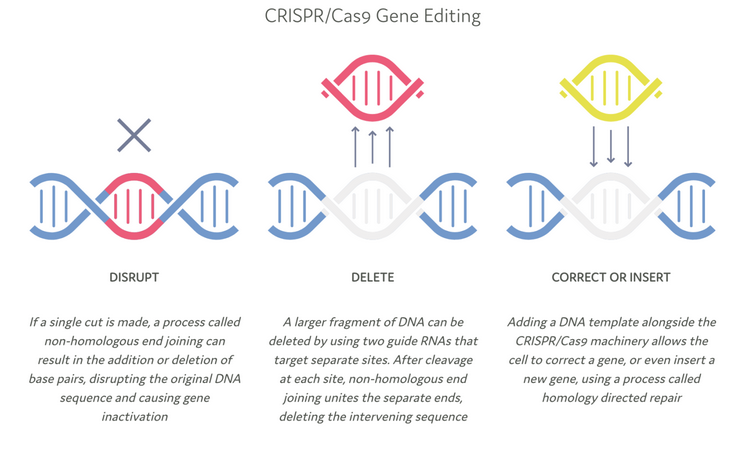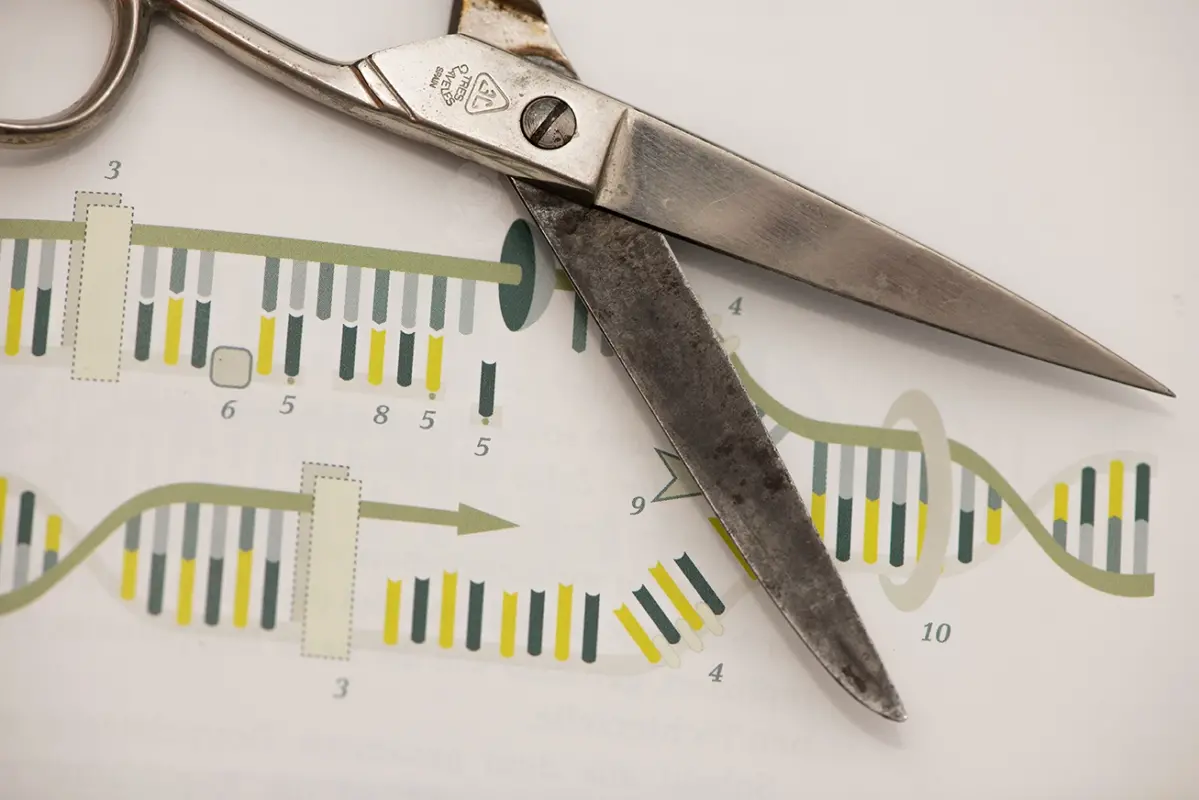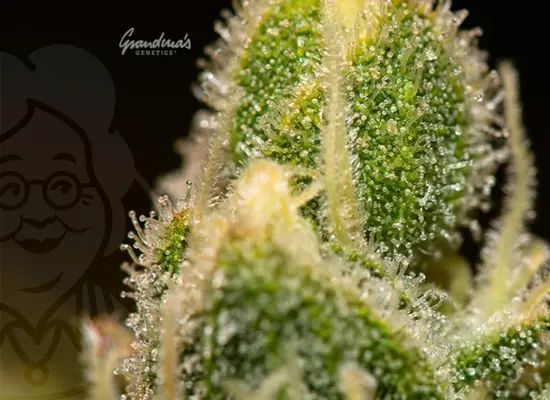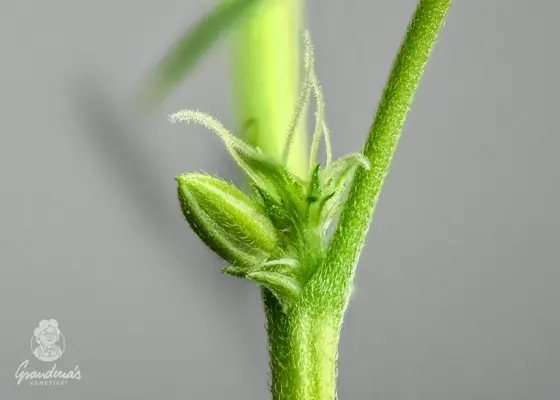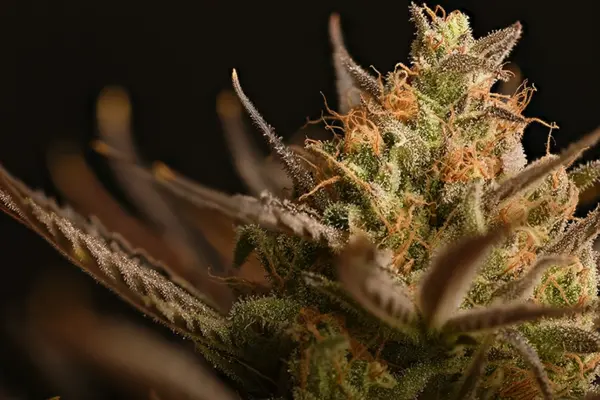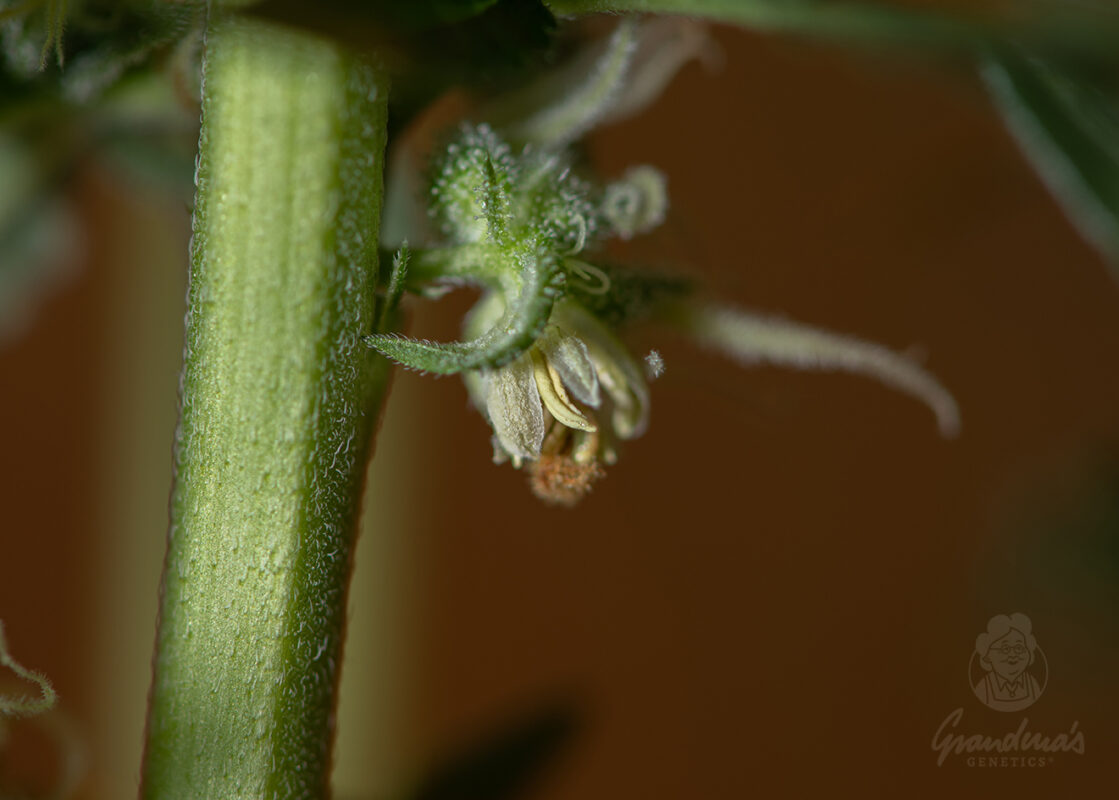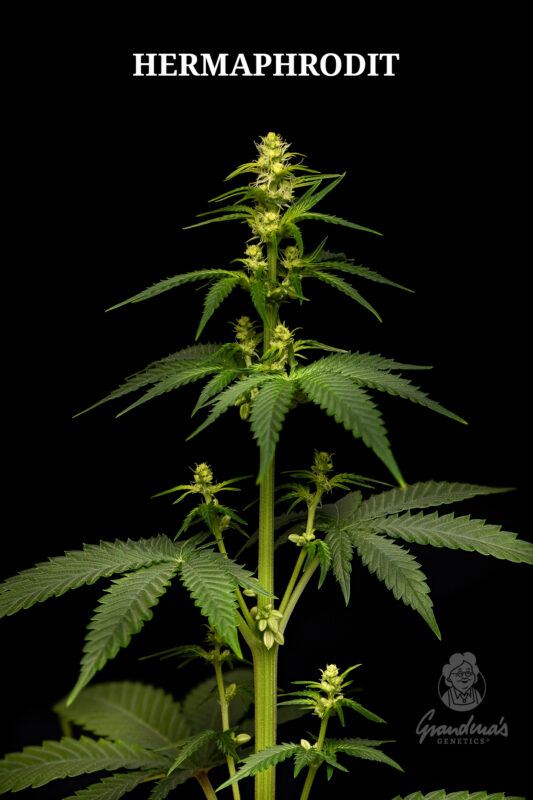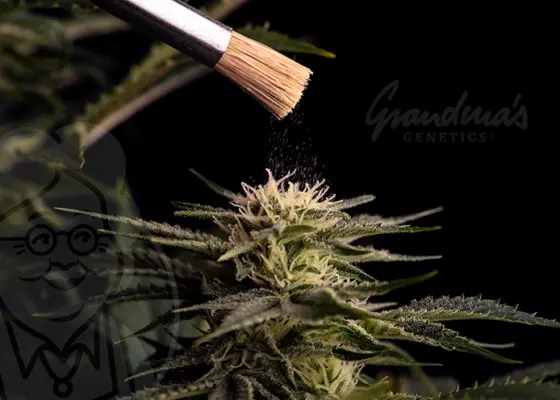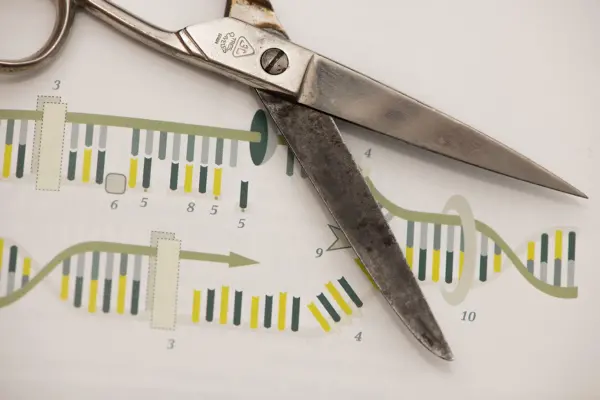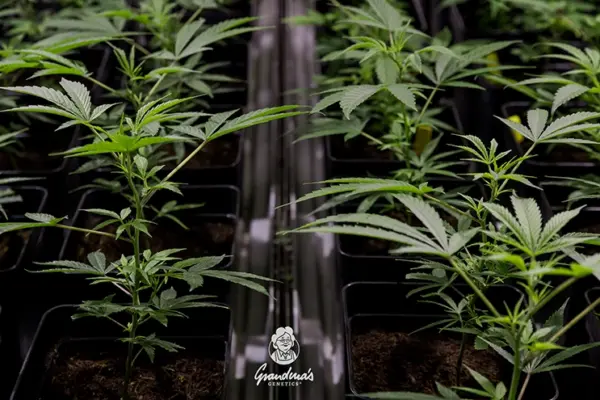“F1”, “IBL”, “BX” and “S1” are terms used in cannabis breeding to describe different generations of cannabis strains. Here are the main differences:
F1
F1 stands for “First Hybrid Generation”. It is the first generation resulting from a cross between two different parent plants. Often F1 hybrid plants show distinct traits of the pollinated mother plant as well as mild to moderately strong traits of the father (pollen donor). This is also referred to as dominant and recessive traits.
If someone then breeds an F2 generation by crossing an F1 Female with an F1 Male from the same batch, the diversity of the different traits and characteristics is already significantly greater. Also disease characteristics from earlier generations become clearly more visible. Therefore, from this point on, it becomes more and more important to select particularly thoroughly. To work your way through generation after generation to the inbred line (IBL), you should have a precise goal in mind, which you are working towards in terms of growth, resistance, taste and effect.
In today’s cannabis world where a lot of crossbreeding is going on and most strains are already hybrids, we always notice that certain breeders keep talking about F1 without having thoroughly analyzed the pedigree of both pairs of parents.
Inside the cannabis bubble a true F1 requires that no identical varieties from previous generations overlap in the pedigree of both pairs of parents. So if the female mother plant and the associated male, both have a Skunk #1 in their curriculum vitae, then this hybrid cross is not F1 genetics!
Outside the cannabis bubble, i.e. in agriculture, which is regulated, we talk about F1 hybrid varieties as soon as a so-called heterosis effect has been achieved. This happens when you have two parent lines, which in the best case do not have the same pedigrees and which have been crossed with themselves about eight times. We are talking about a “Selfing” (Female/Reversed) and not a regular (Male/Female) pollination.
The selfing process (S1) is explained in more detail below.
If this process is repeated up to eight times (S8), both pairs of parents are genetically so far apart that when crossing these two parents, a so-called heterosis effect occurs, which makes the plant appear even larger, stronger and more stable.
See also: CRISPR/Cas9 in Cannabis – The Future of Genetic Engineering
IBL
IBL stands for “Inbred Line.” It refers to seeds that come from a stable and inbred line of parent plants. Here, at each generation (F1, F2, F3, etc.), a breeder can select his most appealing female as well as males and cross them with each other to work through generation after generation and enhance certain positive traits and mitigate negative traits, if any. IBL plants show less genetic variability and are usually hardy and robust. It is often referred to as an inbred line (IBL) from the eighth generation (F8) onwards, as this variety has so often been mated with its own siblings, rather than with other genotypes which have a completely different pedigree.
See also: Genotype vs. Phenotype – What’s the difference?
If you want to do a really serious IBL project, you should make sure from the first F1 generation that both parents, or at least one of the two, already comes from a stable inbred line. This at least increases the chance that bad traits have already been bred out of these genetics. Again, sites like seedfinder.eu should be used to research the pedigrees and histories of the individual varieties. Many seed banks nowadays randomly cross two hybrids with each other and throw them on the retail market as “stable F1 genetics”. Whether these genetics are really that stable is debatable. This certainly depends on the breeder and his selection. Poly-hybrid genetics can also have very interesting properties. Some of the best known varieties are even derived from hermaphrodite pollination or so-called bagseeds.
See also: Hermaphrodites – origins, implications and what the future holds
BX
BX stands for “backcross.” It is a method in which a hybrid is crossed with one of its parent plants (the same male that served in the first pollination to create the hybrid) to obtain or improve certain desired traits.
BX seeds usually have a good combination of stability and desired traits.There are a wide variety of backcrossing methods. However, the most popular is as described above, in which the same male plant is taken over and over again and re-matched with a female plant from the first generation or from the already successful backcross to produce new seeds again.
With our Critical Cake (Wedding Cake x Critical Kush) cross, we did two backcrosses. The first was with Critical Cake #1 which in turn was pollinated with the same Critical Kush male as Wedding Cake from which Critical Cake was created. We named the resulting strain Grandma’s OG, as it showed distinct OG characteristic traits for us.
Another backcross was made with our Critical Cake #7. This phenotype showed traits of both parent pairs. It has fast growth, produces beautiful thick flowers that turn purple towards harvest, and has a berry-like cake aroma. Since our goal was to match the flavor of Wedding Cake with the flower growth of Critical Kush, this backcross proved successful and she became our official Critical Cake BX1.
S1
S1 stands for “Selfed” or “Self Pollination”. It is a method in which a specific female phenotype is selected to produce the next generation of seeds. The method of S1 production often involves the use of stress conditions, such as chemical treatments (STS spray) or light manipulation, to induce the plant to develop male sexual characteristics so that it can self-pollinate or another plant that has not been stress treated and thus serves as the recipient of the pollen.
See also: The difference between Regular, Feminist and Automatic Seeds
S1 seeds usually produce only female plants and may also have unique traits that are not present in other generations. However, since these are genetically-manipulated seeds, the number of hermaphrodites could also be increased.
It is important to note that these terms are not standardized and may be used differently from breeder to breeder. Therefore, it is important to carefully study the specific characteristics and properties of hemp seeds before buying them.
What is CRISPR? CRISPR (Clustered Regularly Interspaced Short Palindromic Repeats) is an innovative biotechnology tool [...]
Hermaphrodite plants are natural and part of cultivating cannabis, even if it is an uncomfortable [...]
Genotype and phenotype are terms used in genetics and refer to the characteristics of plants. [...]
